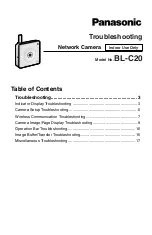
6 Options
980-001-0210K
NetPath 100 User’s Manual - Installation Guide
6-11
November 2000
Dmd: Parameters to be selected for On-Demand operation.
Rate - Select the data rate to be used when establishing On-Demand ISDN
connections.
IMUX - Select the method of inverse multiplexing to be used for On-Demand
calls.
Bond/M1 - Selects Bonding Mode 1 Protocol to bond up to eight B-
Channels.
ML PPP - Selects Multi Link-Point to Point Protocol to bundle up to eight
B-Channels.
NOTE: The unit is transparent to PAP or CHAP, if used to authenticate
the ML PPP connection.
Dwnspd - Disable will not allow a multi-B Channel On-Demand connection to
be completed if only a portion of the B Channels succeed.
Default is “Enable” (downspeeding allowed).
TxD Clk - Selects the clock source for aligning Tx Data input; either DTE-
supplied clock or DCE-supplied clock (default).
Control - Selects On-Demand operation to be controlled by either the DTE’s
DTR lead, or by V.25bis commands.
Channel: Line n, B 1 & 2 - Fields for setting the SPID (Service Profile Identifier) and
Directory Number for each of the B Channels of each ISDN Line, as assigned by
Telco when the ISDN service was established.
The formats for these fields are as follows:
SPID - Telco ID #, numeric string (0 - 20 character) as assigned by Telco.
NOTE: The SPIDs must NOT be the same for both B-Channels on an ISDN
Line.
Directory # - Numeric string, (0 - 20 character) as assigned by Telco.
This is typically the phone number and may or may not include the area code,
dependent upon local Telco requirements.
NOTE: For the NetPath 100 to accept a Dial-In connection to the
B-Channels, the Directory # that is entered must match the called number
passed from the carrier during the ISDN call setup.
Commands
Help [?] - Advances to “Help” for ISDN Configuration screen.
Save [SA] - Saves parameters and returns to System View screen.
Cancel [X] - Returns to System View screen without saving changes.
CAUTION
If any parameter on this screen was changed, the ISDN
Adapter will perform a reset after the Save [SA]
command is issued. The reset will interrupt ISDN data
traffic.
Save the ISDN Configuration changes when they are all set correctly by entering “SA”
followed by ENTER. This will also return the user to the System View screen.
















































